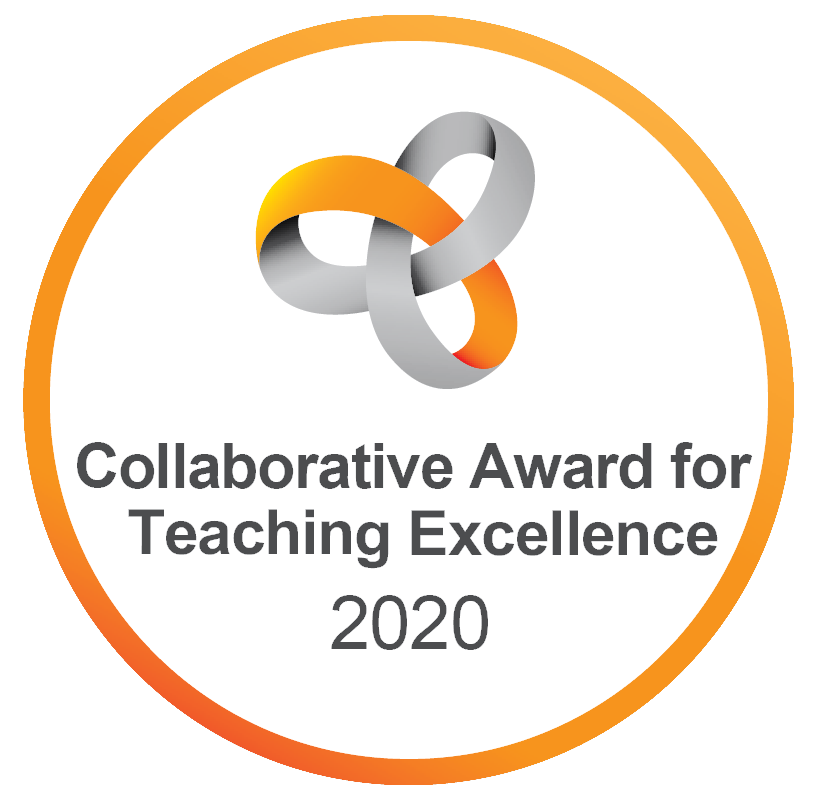Flexible, enriched learning materials with Chirun
Chris Graham
Follow along at tinyurl.com/talksbychris
About me
I'm a Senior Lecturer at Newcastle University and Director of our School's Digital Learning Unit.
I teach mathematical programming to maths students. I'll be talking about how my learning material has evolved over recent years.
Digital Learning Unit
We are best known for the Numbas E-Assessment System. (I'll talk about this a bit...)
But this talk is mostly about Chirun, a tool developed to build course notes. (I'll talk about this a lot...)
Aim of this talk
I'd like to raise awareness of our open source tools at Newcastle.
But really I'm here to add a different perspective on the advantages of moving away from traditional formats (handwritten, PDF...) to web-based learning material.
My story starts with accessibility, but is really about flexibility for students, and enrichment of course material.
The problem with PDF notes
In our School, LaTeX generated PDFs are common, but not great for a student who may wish to:
- use text-to-speech software to read the content
- change the background colour, font-size or spacing
- view the content on a mobile device without zoom and scroll
- navigate with a keyboard
- many other reasons...
Web-based notes
As we've heard already, HTML output + MathJax is the gold standard for mathematical content on the web:
This is not a sales pitch for Chirun. Other tools can convert LaTeX maths to an accessible web-based version:
-
VLE pages sometimes support LaTeX maths
-
Conversion tools, e.g. Pandoc, Lwarp
-
R Markdown, Bookdown
-
PreTeXt, LaTeXML...
More than anything, I encourage you to think about web-based output:
Chirun
Developed at Newcastle University, Chirun converts documents in LaTeX or Markdown format to accessible, responsive, web-based HTML, plus a PDF option (and sometimes others).
It integrates with a VLE through an LTI tool.
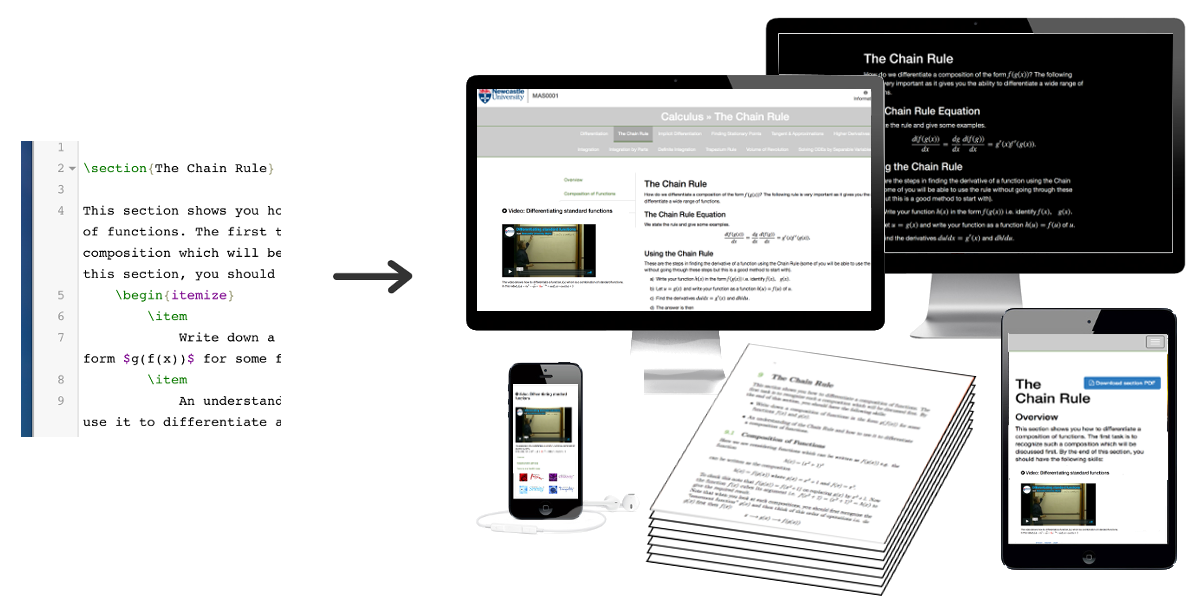
Origins
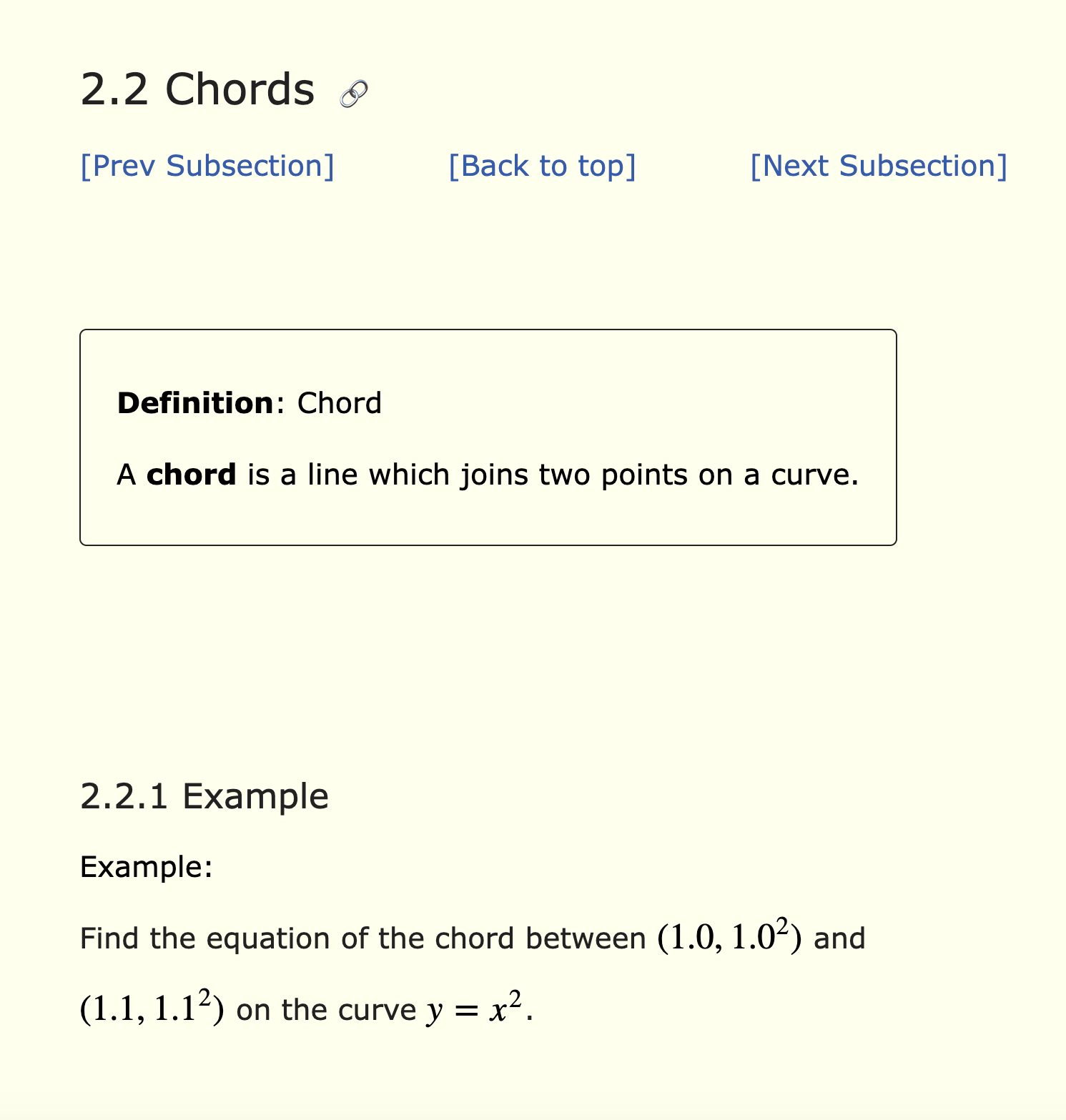
Originally motivated by the needs of a severely disabled student moving through our maths degree, with specific requirements for course material.
"the accessible webnotes allow my screen reader to be able to read the notes out loud to me in a clear, consistent and fluent manor, where the original PDF doesn't read the maths properly at all."
From accessibility to flexibility
Having flexibile, accessible material is good for all students!
We are now delivering material for some modules entirely using the Chirun output as the primary format.
This lets students choose the format that suits their learning style.
This is a Chirun built presentation!
From flexibility to enrichment
A web-based format opens up endless possibilities for making content more dynamic. In particular, it allows the embedding of learning material right where it is relevant:
Built with Chirun
As well as course material in modules, Chirun powers our maths student support website, transition material and more with themes that be customised to the application.
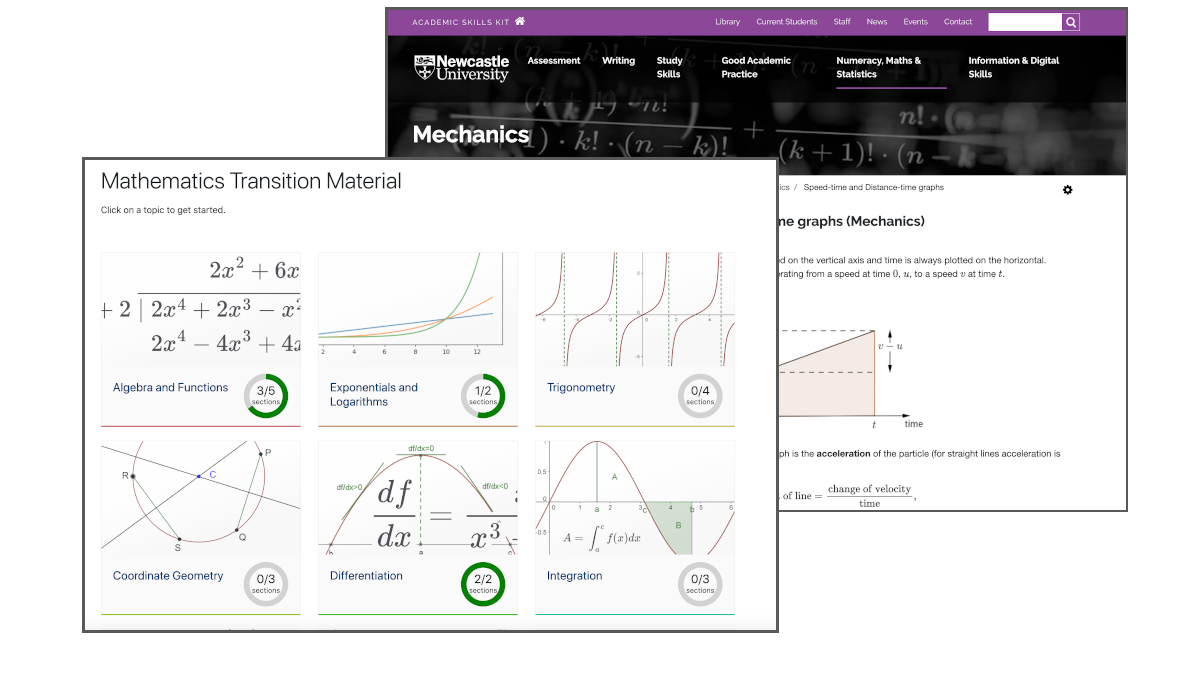
Trying out Chirun
We have a public upload tool
Anyone can upload content to the tool: it provides a time-limited version of the generated material and option to download the output.
Getting content into your VLE
This is a challenge: tools such as Chirun can produce web-based material, but where do you then put it to give access for students?
It's often possible to upload the content into a VLE files area, but tricky and inconvenient to give students access. Or it could be put on a web server somewhere.
The Chirun LTI tool was built to make this easier.
Chirun LTI tool
The Chirun LTI tool gives an interface for uploading notes and controlling access for learners.
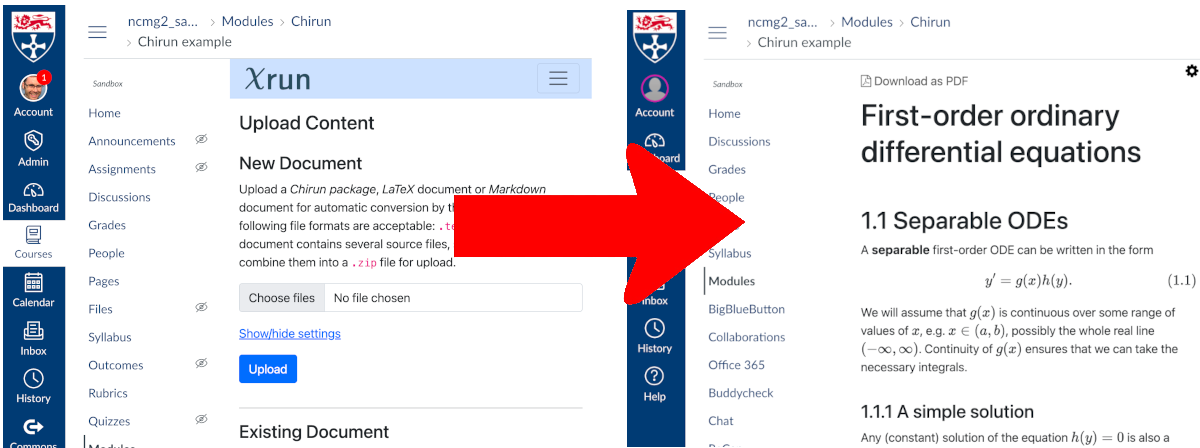
Chirun: Under Construction
We've recently undergone personnel changes, which caused a stall but now new developments. Coming soon...
- Features to meet accessibility standards
- New LTI tool
- Editing content in the browser
- Easier to prepare a full module of content, but only link to a part of it
- We're considering the barriers of hosting a public LTI tool
Case study: programming module
Challenges:
- additional challenges for accessibility - multiple pieces of software
- engagement - students with disparate computing experience who signed up for maths!
Programming structure
Programming is embedded in our mathematics programme:
- Stage 1:
- Problem solving with Python
- Introduction to probability and R
- Stage 2:
- Numerical methods with Python
- Computational statistics with R
Format is a 1 hour lecture, followed by a 2 hour practical each week.
Evolution of practical material
From physical handouts, material has evolved to Chirun generated handouts.

Jupyter notebook output
Chirun generates a Jupyter notebook from the same source - an additional option and has been used as a solution for some Student Support Plans.

Embedded exercises
Embedded exercises use the new Numbas extension to directly mark computer code.
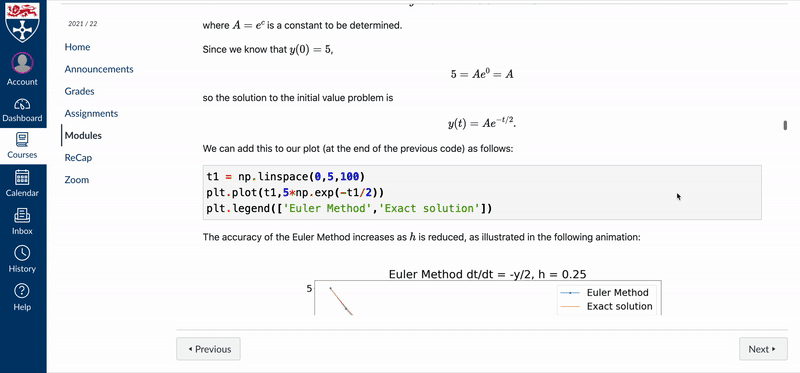
Numbas Programming Extension
Runnable code in lectures
def gcd_recursion(a, b):
if b == 0:
return a
return gcd_recursion(b, a % b)
print(gcd_recursion(12,8))Student feedback
I like that I can work through the handout so that I'm learning in the best way for myself, at my own pace
By far the most accessible module. The handouts and numbas quizs are amazing, easy to understand, easy to navigate.
I appreciate all the available practice assesments and the content is laid out in a good and structured way.
Have a go
Slides and some activities can be found at tinyurl.com/TalksByChris:

Thanks for listening!
More info at chirun.readthedocs.io
Any questions?


